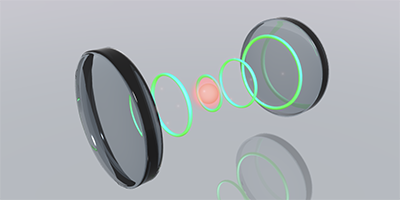Cavities Play Catch with Photons
Future quantum networks might consist of flying quantum bits made of single photons, captured by nodes that perform computations and send messages. But how easy is it to catch and hold a single photon, for instance, in a small cavity? Researchers in the group of Shengwang Du at the Hong Kong University of Science and Technology have demonstrated that, by shaping its wave function, an individual photon can be loaded into a cavity with near-unity efficiency.
When a photon is injected into a cavity, it can be reflected, transmitted, or captured by the cavity. In previous experiments, reflection and transmission limited the photon loading efficiency to ∼20%. The new idea is based on exploiting quantum interference phenomena in a cavity between two mirrors—a perfectly reflecting one and an input/output mirror. Using an electro-optical modulator, the researchers prepare a photon wave function that, after each round trip in the cavity, interferes destructively with the reflected wave packet. This eliminates most reflections from the cavity while the photon is injected into the cavity.
To monitor the cavity photon without perturbing it, the authors apply a “heralded” scheme: a laser-pumped rubidium-atom cloud emits entangled photon pairs, which are then split. The detection of one photon heralds the presence of the one being sent into the cavity. Using an optimally prepared waveform, the authors demonstrate a record loading efficiency of 87%. The scheme could be used to build nodes of a network based on cavity quantum electrodynamics, in which operations are carried out via the interaction of a single photon with a single atom.
This research is published in Physical Review Letters.
–Matteo Rini





